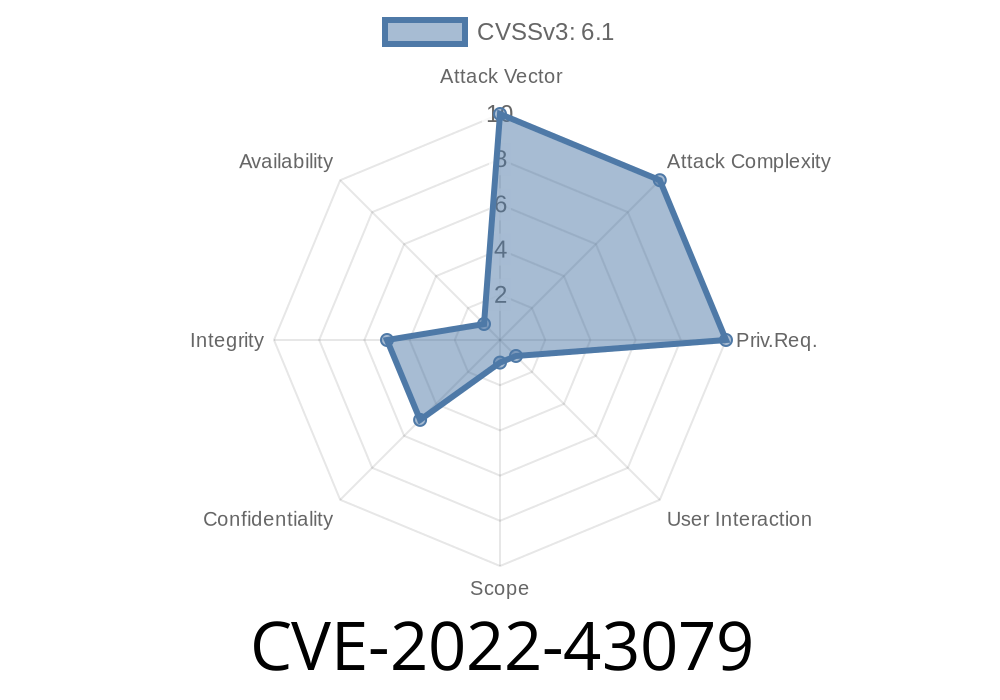Hello fellow security enthusiasts! Today, we will be examining an interesting cross-site scripting (XSS) vulnerability found in Train Scheduler App v1.. This nasty little bug, identified as CVE-2022-43079, enables attackers to insert and execute arbitrary web scripts or HTML by injecting crafted payloads into the cmddept parameter. Buckle up and get ready—we're about to dive deep into the details of this vulnerability and explore a possible exploit scenario.
The Vulnerable Application: Train Scheduler App v1.
Train Scheduler App v1. is a web-based application designed to help rail operators manage schedules efficiently. It is popular among small- and mid-sized rail companies due to its ease of use and features. Unfortunately, its path to fame has hit a bump with the discovery of the concerning XSS vulnerability.
For additional information on Train Scheduler App v1., check out the project site: TrainSchedulerApp
Vulnerability Overview: CVE-2022-43079
CVE-2022-43079 is a stored XSS vulnerability that affects the /admin/add-fee.php component of the Train Scheduler App v1.. When exploited, this vulnerability allows an attacker to inject malicious code into the cmddept parameter, causing it to be executed in the context of the affected web page.
To understand the issue better, let's dive into the vulnerable code snippet
<?php
// ...
if (isset($_POST['cmdSubmit'])) {
$cmdDept = $_POST['cmddept'];
// ...
$sql = "INSERT INTO fees (dept, ... ) VALUES ('$cmdDept', ... )";
// ...
}
// ...
?>
The glaring issue here is that the cmddept parameter's value, which comes directly from user input, is not sanitized or validated before it's added to the SQL query. Thus, the attacker can craft a malicious payload, inject it into the cmddept parameter, and smuggle it into the database.
Exploit Scenario: Stored XSS Attack
Imagine an attacker decides to target the Train Scheduler App and exploit this vulnerability. To begin, the attacker crafts a malicious payload, likely incorporating JavaScript to achieve their nefarious goals. The payload might look something like this:
<script>alert('XSS Attack!')</script>
Next, the attacker submits the crafted payload by injecting it into the cmddept parameter via a specifically formatted web request. Here's an example of what it might look like:
POST /admin/add-fee.php HTTP/1.1
Host: vulnerable-site.com
Content-Type: application/x-www-form-urlencoded
cmddept=<script>alert('XSS Attack!')</script>&cmdSubmit=Submit
Once submitted, the payload is stored in the cmddept column of the fees table in the application's database. The next time another user views a page displaying the contents of the cmddept column, the attacker's JavaScript code will execute within the context of that user's web session. Depending on the attacker's goals, this could lead to stolen personal information, fraudulent transactions, or other unauthorized activities.
Mitigating CVE-2022-43079
To address this vulnerability, it is crucial to implement proper input validation and sanitization. It's always best to follow best practices, such as:
Employing server-side input validation checks to ensure user input meets predetermined rules
3. Implementing output encoding to convert user-controlled input into safe formats that will not execute as code
Additional Resources
To learn more about CVE-2022-43079, cross-site scripting, and best practices for secure coding, check out these resources:
- CVE-2022-43079: NIST NVD
- OWASP XSS Prevention Cheat Sheet
- SecureCoding by OWASP
In conclusion, CVE-2022-43079 is an eye-opening reminder of the importance of secure coding practices. By understanding the risks associated with improper input handling and learning how to prevent such vulnerabilities, we can create a safer and more secure online world.
Timeline
Published on: 11/01/2022 14:15:00 UTC
Last modified on: 11/02/2022 00:36:00 UTC
